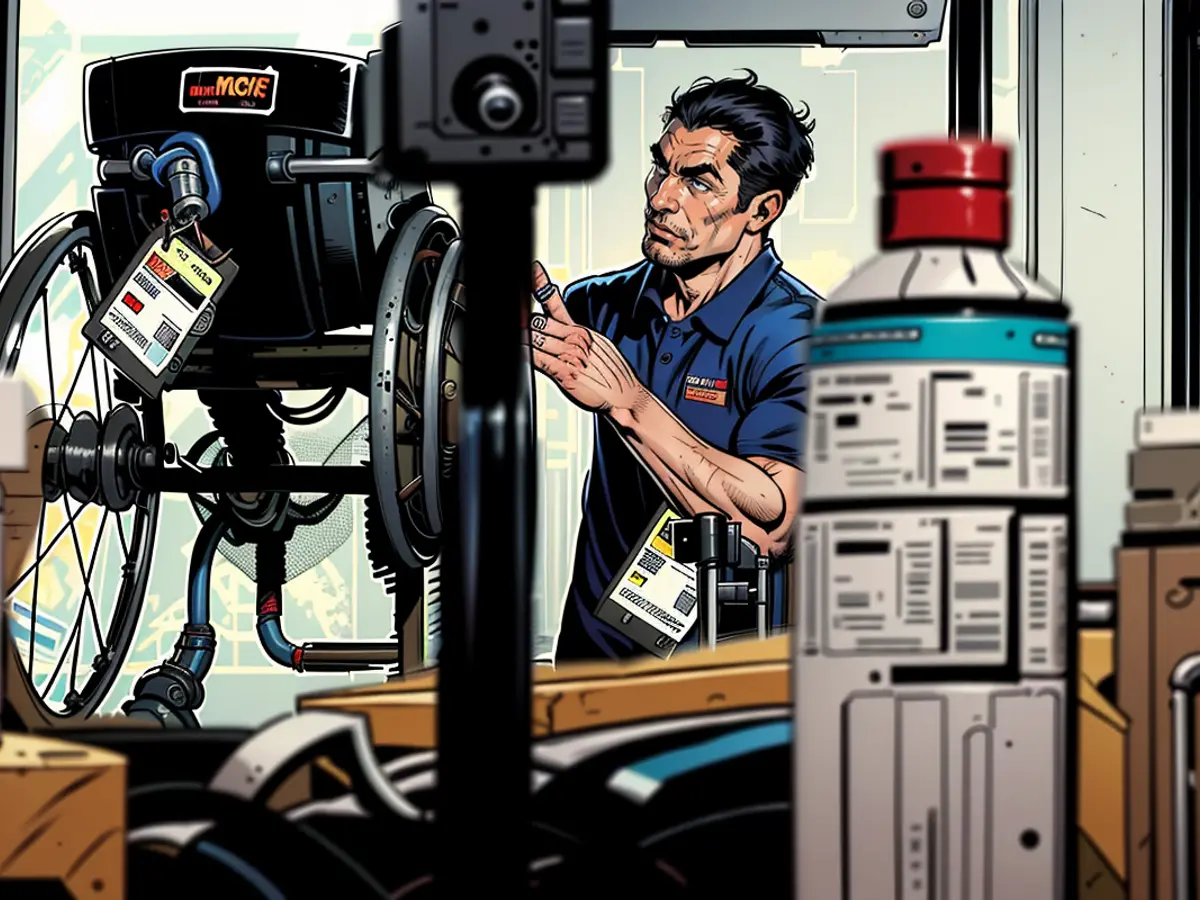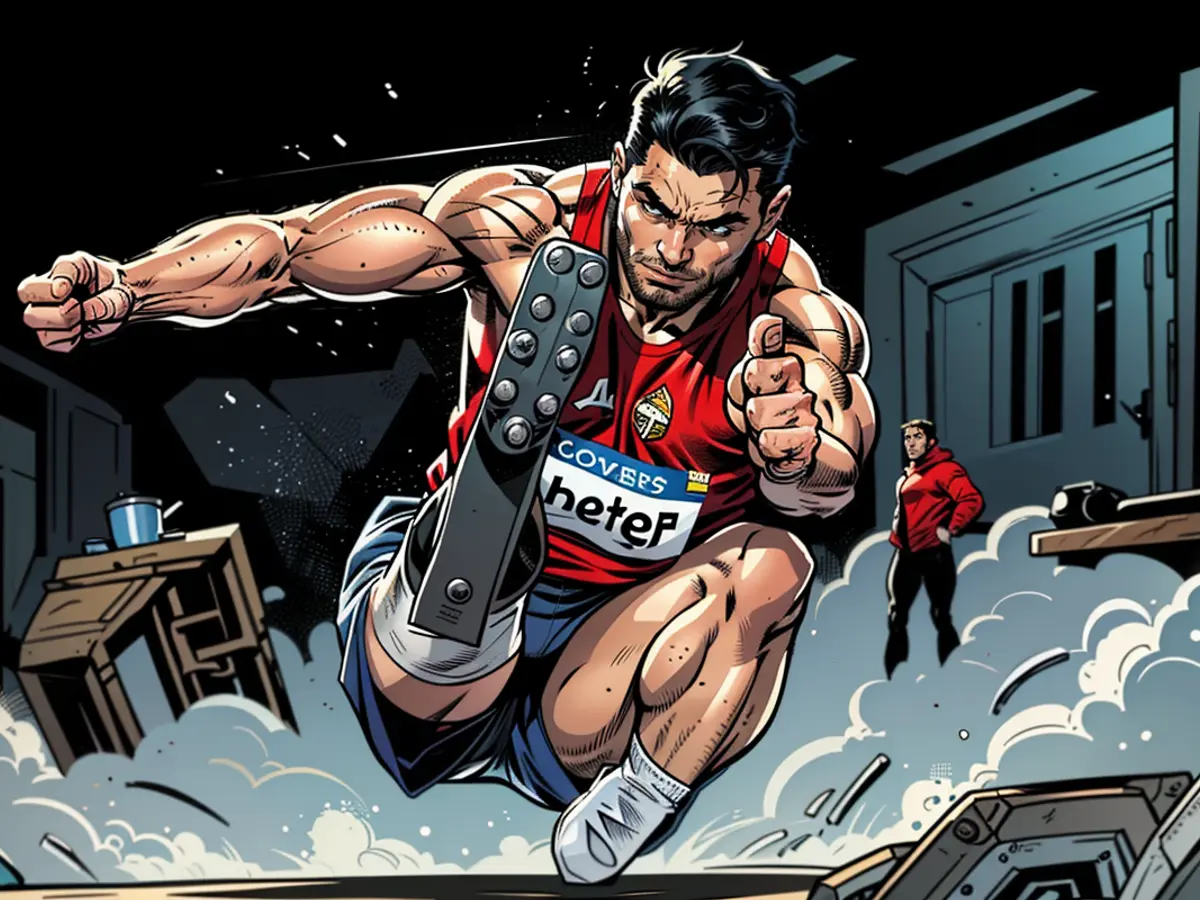- Cutting-edge technology in the arena: The Paralympics have become so technologically advanced
When Belgian wheelchair sprinter Peter Genyn aimed to safeguard his title in the 100-meter final at the 2021 Paralympics in Tokyo, he encountered a setback 45 minutes before the race: his wheelchair had three flat tires and a damaged frame, hinting at sabotage. Initially appearing like the end of his participation, the situation was resolved at the last minute by a devoted crew. The tires were replaced, a fresh frame was obtained, and the chair's seat was temporarily secured using duct tape. Genyn recounted in an interview with "Sportschau" that "we used parts from various wheelchairs. The entire team collaborated. It was unbelievable." He managed to win the race and clinch his second Paralympic gold.
This miraculous turn of events wasn't by chance but the outcome of the devotion of hundreds of employees at the Paralympic workshop, who mend up to 200 prosthetics, wheelchairs, and other equipment daily.
At the Paralympics, most athletes depend on technological aids. Since 1988, the German orthopedic technology company Ottobock has guaranteed impeccable functioning of the equipment. With over 160 experts from more than 40 nations, the firm looks after the devices of the 4400 athletes and repairs not only their own gadgets but also those of other manufacturers. They stock an extensive range of spare parts for repairs.
From 3D printing to welding technology
In the Ottobock-operated workshop, body parts can be scanned and then fabricated on a 3D printer with tailor-made fitting pieces. However, traditional repairs are equally significant. The workshop houses a thermoplastic department that works with materials like plastics, as well as a metallurgical facility for metals such as aluminum, steel, and titanium, along with a tailor shop for textiles. Here, repairs span from wheelchair tire replacements to highly precise prosthetic adjustments. Thousands of prosthetics are stored in the warehouse to enable quick and efficient repairs.
Between high-tech optimization and strict rules

Unlike everyday prosthetics, which prioritize aesthetics and disguise, sports prosthetics focus solely on performance and functionality. Sports prosthetics must meet extreme requirements: while everyday prosthetics carry two to three times the bodyweight, it increases to five times during professional competitions like running and jumping. "To enable athletes to reach these peak performances, every component is optimized. Anything not absolutely necessary is omitted. Every screw is weighed to potentially shave weight and enhance aerodynamics," explains orthopedic technician manager Julian Napp in an interview with stern. Sports prosthetics are typically crafted from compressed carbon. This design biomechanically permits optimal energy return and assists athletes in achieving better performance and higher speed.
However, there are boundaries: while parasport athletes may leverage digital high-tech tools with sensors and AI-enhanced software for training analysis and optimization, sports prosthetics can only be propelled by muscular force during competition. Athletes relying on electronic aid during competition would be disqualified. This rule is stringently enforced, as Julian Napp elaborates.
This is how the performance of the athletes is compared
Athletes with diverse types and degrees of disabilities often contend in the same discipline, necessitating adherence to clear rules to guarantee fair competition conditions. Athlete classification ensures equal opportunities between them.
For instance, the number of spikes on prosthetic soles and the length of prosthetics are calculated using a precise measurement system. For double-leg amputee track and field athletes without legs, their possible body height without a disability is estimated based on arm length and wingspan. This ensures that the prosthetic legs correspond to the athlete's natural leg length, preventing any unfair advantage or disadvantage from prosthetic use.

However, there are no such checks for single-leg amputees. Here, the prosthetic components must be meticulously fitted to the remaining natural body component, explains Napp. An ill-fit could even put the athlete at a disadvantage.
The evolution of Parasport over the past decades
Over the past ten to twenty years, there have been limited material advancements in sports prosthetics. The real innovation in Parasport stems from the development of the sport itself. While certain advancements are well-established in mainstream sports, they are only recently gaining traction in Parasport. The professionalization of athletes and improvement in training conditions are at the forefront. A case in point is the newly established talent centers for Parasport athletes that were unthinkable just a few years ago. These centers provide young talents with an opportunity to explore and allow trainers to innovate new training methods with their athletes. Technology also benefits from this professionalization: prosthetics can be more accurately tailored to individual athlete needs, leading to further sporting achievements.
An illustration of this progress can be observed in the comparison between German long jumper Heinrich Popow and Léon Schäfer. Popow triumphed in Rio in 2016 with a jump of 6.42 meters in the category for single-leg above-knee amputees, while Schäfer surpassed the 7-meter mark with a jump of 7.24 meters just four years later, becoming the first single-leg above-knee amputee to achieve it – a historic milestone in Parasport. Recently, Dutchman Joel de Jong set a new world record with an impressive jump of 7.76 meters, ousting Paralympic Games favorite Léon Schäfer from the spotlight.
Despite advancements in tech and initiatives in adaptive sports, access to athletics remains a luxury for numerous disabled individuals, budget-friendly for only a select few. Heinrich Popow labels Parasport athletes as " accidental successes," as their achievements heavily depend on financial situational advantages. Prosthetics mainly obtain funding from sponsors or require self-payment, making sports engagement unattainable for many. Consequently, Popow advocates for increased backing and promotion of the disabled community to prevent athletic accomplishments from hinging on an athlete's income.

The Ottobock workshop, responsible for maintaining the equipment at the Paralympics, works tirelessly to fix up to 200 prosthetics, wheelchairs, and other equipment daily, ensuring that athletes have functioning technological aids during the Paralympics. Despite facing challenges in the 100-meter final at the 2021 Paralympics, Belgian wheelchair sprinter Peter Genyn managed to clinch his second Paralympic gold due to the dedication of the Ottobock team, demonstrating the importance of their services.








